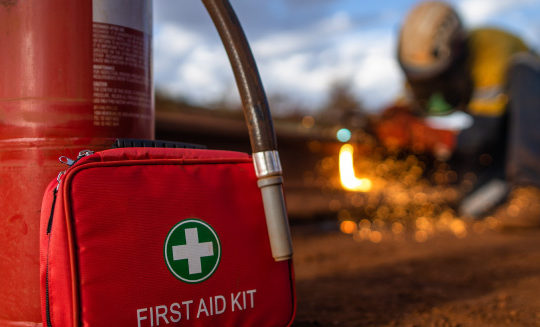Dealing with a fever can be frustrating, especially when discomfort seems to take over. You may feel hot, restless, and drained of energy, and finding quick relief becomes a priority. Many turn to ice packs in hopes of cooling down, but does this simple method actually work?
Fevers occur when the body raises its temperature to fight off infections, and while this is a natural response, it can leave you feeling miserable. The idea of using ice packs seems logical, but is it the best solution for bringing relief?
In this article, we’ll explore whether ice packs can truly help reduce fever symptoms and the potential risks involved. We’ll also share what you should keep in mind when trying to manage a fever effectively. Stick around to discover if ice packs are a safe and effective way to cool down during a fever.
What is a Fever?
A fever is a temporary increase in the body’s temperature, often associated with an illness or infection. It is the body’s natural response to fight infections and other health challenges. Average body temperature varies but is typically around 98.6 degrees Fahrenheit (37 degrees Celsius). When the body’s temperature rises above this baseline–starting at 100.4 degrees Fahrenheit (38 degrees Celsius)–it’s considered a fever.
Fevers can be caused by various factors, including infections (bacterial, viral, fungal), inflammatory conditions, heat exposure, and certain medications. Most commonly, fevers result from viral or bacterial infections, such as the flu or a cold. Fevers can also vary in severity and duration, ranging from mild to high and short-lived to persistent.
Why Do Fevers Occur?
Fevers are a critical part of the body’s defense mechanisms. They serve several vital purposes in the immune response.
- Inhibiting Pathogen Growth: Elevated body temperature can slow the growth and replication of many pathogens, including bacteria and viruses. This can make it more difficult for the invader to multiply and spread within the body.
- Enhancing Enzyme Activity: Certain enzymes in the body work more efficiently at higher temperatures. This can help the body’s chemical reactions, including those involved in the immune response, to proceed more rapidly.
- Improving White Blood Cell Function: Fevers can make white blood cells more effective at phagocytosis (engulfing and destroying foreign invaders) and improve the ability of immune cells to recognize and respond to antigens.
- Alerting the Body to Infection: A fever often causes discomfort and fatigue, making the affected individual rest and conserve energy. This can be an adaptive response to help the body allocate more resources to fight the infection.
- Regulating Body Temperature: A fever is part of the body’s temperature-regulating mechanism. When the hypothalamus, the body’s internal thermostat, senses an infection, it signals the body to raise its temperature. This creates a less favorable environment for the pathogen’s survival and replication.
The Role of Ice Packs in Managing Fevers
While a fever is a natural response to infection or illness and often helps the body recover, it can also be uncomfortable and even dangerous in certain situations, especially when it reaches high temperatures. Therefore, it’s essential to manage a fever appropriately.
Ice packs are one method that some people use to help manage a fever. However, it’s important to understand this approach’s potential benefits and risks.
Benefits of Using Ice Packs for a Fever
There are several benefits to treating a fever with ice packings, including:
- Temperature Reduction: Ice packs can effectively lower body temperature by constricting blood vessels and dissipating heat. This cooling effect can help alleviate discomfort and reduce the risk of overheating in cases of high fever.
- Comfort: Many individuals find relief from the discomfort associated with high fevers when they apply ice packs to their forehead, neck, or armpits.
- Headache Relief: Cold compresses can be beneficial in reducing fever-related headaches or head pressure.
- Calming Effect: The cooling sensation of ice packs can have a calming effect, which psychologically may help ease restlessness and anxiety associated with a fever.
Risks and Considerations of Using Ice Packs for a Fever
While there are potential benefits to using ice packs for a fever, it’s essential to be aware of the potential risks and to consider when it might not be the best approach.
- Overcorrection: Applying ice packs excessively or for an extended period can cause the body to overcompensate, leading to a “rebound effect.” When the ice pack is removed, the body may raise the temperature further to counteract the cooling effect. This can make the fever worse in the long run.
- Shivering and Muscle Tension: The body may respond to extreme cold by shivering and tensing muscles, which can raise the body’s core temperature. This is counterproductive in the context of fever management.
- Hypothermia: In extreme cases, excessive use of ice packs can lead to hypothermia, a condition in which the body’s core temperature drops to a dangerously low level. Hypothermia is a medical emergency and can be life-threatening.
- Discomfort and Anxiety: While ice packs can provide relief to some, they may be uncomfortable or distressing to others, particularly children or those with sensory sensitivities.
- Masking Symptoms: Lowering the fever with ice packs can sometimes mask the underlying condition, making it difficult to monitor the progression of the illness. This can sometimes be detrimental, as it may delay necessary medical treatment.
- Underlying Health Conditions: Some individuals may have underlying health conditions, such as poor circulation or Raynaud’s disease, that make ice pack use less safe, comfortable, and effective.
When to Use Ice Packs for a Fever
In light of the potential benefits and risks of using ice packs for a fever, there are specific situations where it might be appropriate.
- High Fever: Ice packs can be considered when a fever is very high, typically over 104 degrees Fahrenheit (40 degrees Celsius). High fevers can be more uncomfortable and have a higher risk of complications, making temperature reduction a priority.
- Seizure Risk: In young children or individuals with a history of febrile seizures, cooling measures like ice packs may reduce the risk of seizure activity during a high fever.
- Discomfort: When an individual with a fever is experiencing extreme pain, primarily related to a headache or head pressure, ice packs may be used temporarily to provide relief.
- Monitoring and Emergency Situations: Ice packs can be a temporary measure while seeking medical attention for a high fever. It is important to monitor the individual’s condition and remove the ice pack if their temperature drops too quickly or if they show signs of shivering or discomfort.
Additional Pain Management to Use with a Fever
When using ice packs to treat a fever, it’s good to also practice the following in conjunction with them.
- Stay Hydrated: Fever can lead to dehydration, so it’s essential to drink plenty of fluids, such as water, clear broths, or electrolyte drinks. Staying hydrated helps the body maintain its natural temperature regulation.
- Rest: Allow the body to rest and allocate energy to fight off the infection. Sleep and relaxation are essential during a fever.
- Medications: Over-the-counter fever reducers like acetaminophen.
Conclusion
Using ice packs for a fever has both potential benefits and risks. Ice packs can provide temporary relief from discomfort and reduce body temperature, especially in cases of high fever. However, they should be used cautiously, as excessive or prolonged use can lead to rebound fever or even hypothermia. As always, consulting a healthcare professional for guidance on fever management is often the best approach to ensure the individual’s well-being.
FAQs
Is it safe to use ice packs on infants with a fever?
No, it’s not generally safe to use ice packs on infants with a fever. The cold can make them shiver, which might raise their body temperature. Lukewarm baths or medications like acetaminophen are usually safer alternatives for reducing fever in infants.
What are the recommended alternatives to ice packs for fever reduction?
Instead of ice packs, use lukewarm baths, encourage hydration, and administer fever-reducing medications like acetaminophen or ibuprofen. These methods are gentler and help lower fever without the risks associated with extreme cold treatments like ice packs.
How long should an ice pack be applied to the body to relieve fever symptoms?
If using an ice pack for fever relief, limit its application to 15-20 minutes at a time. Always place a cloth between the skin and the ice pack to prevent frostbite or skin irritation.
Can ice packs cause any adverse effects when used for fever?
Yes, prolonged use of ice packs can lead to skin irritation, frostbite, or ice burns. Additionally, they can trigger shivering, which might worsen the fever by causing the body temperature to rise instead of lowering it.










